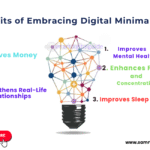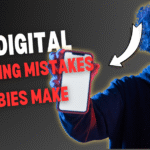In the rapidly evolving landscape of today, finding sustainable solutions is more urgent than it has ever been. The emergence of green technology—creative advancements aimed at minimizing environmental harm—presents a hopeful avenue for fostering a cleaner and greener future. By embracing these technologies, individuals, corporations, and governments can greatly diminish their carbon footprints while encouraging environmentally friendly practices. In this post by Smart Digital Guide, we will delve into effective strategies for implementing green technology to ensure a sustainable future.

What is Green Tech?
Green technology, commonly known as green tech, encompasses the application of scientific and technological innovations aimed at minimizing adverse effects on the environment. This field covers a wide range of solutions, including renewable energy options such as solar and wind power, along with energy-efficient devices, electric cars, and waste management strategies. Adopting green tech has transitioned from being an alternative to becoming essential for achieving a sustainable future.
Why Green Tech is the Future
The rising apprehensions regarding climate change and global warming have positioned green technology as an essential component across all sectors. Here’s the rationale:
- Minimizes Carbon Emissions – The transition from conventional energy sources to renewable alternatives can significantly lower greenhouse gas emissions.
- Long-Term Financial Savings – Implementing technologies such as solar panels and energy-efficient appliances leads to considerable savings in the long run.
- Encourages Environmental Consciousness – Companies that embrace green technology serve as role models for both customers and competitors alike.
- Supportive Government Initiatives – A growing number of governments are providing subsidies and incentives for those utilizing green technologies.
Steps to Implement Green Tech for a Sustainable Future
1. Transition to Renewable Energy
The initial move towards sustainability involves embracing renewable energy sources such as solar, wind, and hydropower. For instance, solar panels can supply electricity for homes and offices while minimizing reliance on fossil fuels. Companies may also collaborate with green energy suppliers.
2. Utilize Energy-Efficient Appliances
Energy-efficient devices like LED lighting, smart thermostats, and high-efficiency air conditioners play a vital role in reducing power usage. These minor adjustments can lead to significant changes when adopted widely.
3. Embrace Electric Vehicles (EVs)
Transportation significantly contributes to carbon emissions. By opting for electric vehicles or bikes, you can reduce fuel expenses and promote a healthier environment. Both public sector entities and private companies should consider adopting EV fleets.
4. Minimize Waste and Promote Recycling
Executing effective waste management tactics such as recycling and composting is essential for green technology initiatives. Businesses might invest in automated recycling systems or team up with environmentally friendly waste disposal services.
5. Implement Green Building Methods
Constructing eco-conscious buildings utilizing sustainable materials alongside energy-efficient technologies provides another superb opportunity to practice green tech principles. Features such as rainwater collection systems, solar-powered roofs, and intelligent lighting greatly help lower environmental footprints.
Benefits of Implementing Green Tech
- Environmental Conservation – Minimizes pollution and preserves natural resources.
- Financial Benefits – While the upfront costs may be significant, sustainable technology leads to savings over time.
- Enhanced Brand Reputation – Companies that implement environmentally friendly technology build customer confidence.
- Preparedness for the Future – With increasingly stringent global regulations, adopting eco-friendly solutions guarantees compliance and sustainability.
Challenges in Adopting Green Tech
Although green technology offers numerous advantages, its adoption encounters several obstacles, including significant upfront expenses, insufficient awareness, and restricted access to cutting-edge technologies in rural regions. Nevertheless, with growing awareness and supportive government programs, these hurdles are swiftly being addressed.
The Role of Smart Digital Guide
At Smart Digital Guide, we are dedicated to advancing creative solutions for a more sustainable planet. Our mission is to inform individuals and companies about the significance of embracing green technology for a viable future. Through various platforms such as blogs, guides, and digital materials, we strive to motivate environmentally conscious choices that positively impact both nature and the economy.
Conclusion
Adopting green technology for a sustainable future is now an obligation rather than an option. Each effort, whether it’s utilizing renewable energy sources or embracing electric vehicles, plays a crucial role in fostering a cleaner environment. Collaboration among individuals, companies, and governments is essential to expedite this transformation. As global emphasis on sustainability increases, embracing green technology stands out as the wisest investment moving forward.









